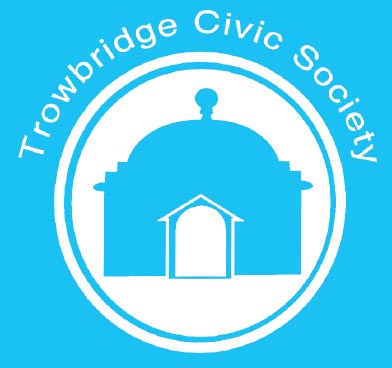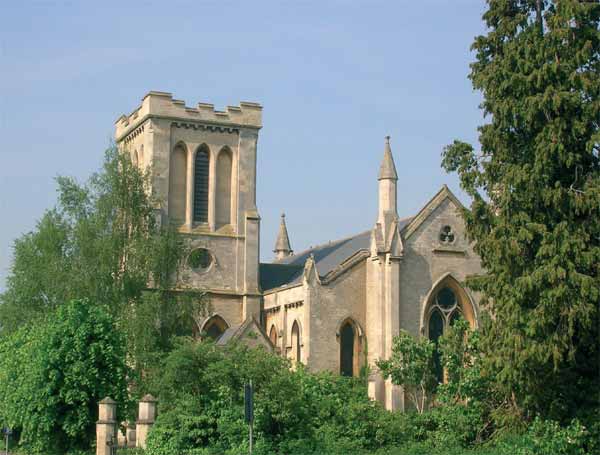| ||||||||||||||||||||||||||
Contents
Click on the item to go to the article. |
Editorial CommentIn her preview of Heritage Open Days Margaret Howard asks how many roads are named after Mary. At present Wiltshire Council does not allow new roads to be named after persons - living or dead. No more Mortimer Streets, Rutland Crescents, Seymour Roads etc. However this policy is under review and consultation is imminent. To give your view on this practice please contact the editors or the Chairman. The closing date for copy for the next Newsletter is Friday 17 September. |
Forthcoming Events
| 2010 | ||
| Saturday 10th July 2010 10:30 to 12 noon |
Coffee Morning / Bring and Buy By kind invitation of John and Kay Austin |
46 St. Thomas' Road, Trowbridge |
| Saturday 11th September 2010 10:30 to 16:00 |
Heritage Open Day | Various sites open. volunteers needed to steward Blind House please. |
| Tuesday 19th October 2010 19:30 |
Some Wiltshire Place Names Talk by Martyn Whittock |
Haden Room, United Church, Church Street, Trowbridge. |
From our Chairman
The following letter was recently published in the Wiltshire Times. Unless you take the Wiltshire Times you will not have seen it so I have decided to include it in my article as it is about an issue of direct concern to the Civic Society.
Dear Sir, Yet again, ‘Anything will do for Trowbridge’
It seems that the indifference to conservation issues affecting Trowbridge which has prevailed in past years within the Planning Department of West Wilts District Council continues unabated under the auspices of the new Wiltshire Council. Recently, Trowbridge Council agreed in principle to the proposed re-alignment of the front boundary wall to the Margaret Stancomb School, on the understanding that the stone and the railings were to be re-used in forming the new boundary.However, the developers’ planning statement - which was not given to the Town Councillors - states that, ‘The railings currently do not contribute to the character and appearance of the Conservation Area. Their permanent removal would improve the Conservation Area.’ Trowbridge lost over 90% of its iron railings for the war effort, but these were not removed because they formed the boundary to the school playground, and there was a significant drop to the road. They were some of the few remaining pre-war railings in the town, evidently a matter of no concern to the developers or planners. In fact, no plans or elevations were available for viewing at Planning Department in Bradley Road, showing the wall in its new position - a departure from normal procedure, especially when dealing with applications affecting Conservation Areas. The reason the planners gave for the failure to re-use the railings was that the new wall will be curved, whilst the railings are straight. They are obviously ignorant of the fact that any of the engineering companies within the town could easily and inexpensively have reformed the railings to accommodate the
necessary curvature.
Ah, it's just another detail, which in Bradford on Avon, Westbury, Chippenham or Salisbury, would be treated with due respect. But it's Trowbridge, so it really doesn't matter. Anything will do for Trowbridge. It is frankly appalling that our planning officers can make such disgraceful and arbitrary decisions, for which there is no recourse.indifference? Ignorance? Or is this yet another example of utter contempt for the County Town shown by our planning officers?
What I find difficult to comprehend is that the planning officers at Bradley Road, who wield so much power when it comes to planning issues, appear to be so ignorant and uncaring of our local history. The fact that Trowbridge lost so much of its ironwork for the war effort is surely a reason why we should endeavour to save the little that is left. I find it totally incomprehensible that the planning officers could agree with the statement that ‘the permanent removal of the Victorian (my word) railings would improve the Conservation Area’. It simply beggars belief. The decision not to use the railings had nothing to do with saving the Council money as the whole road development here, including the re-instatement of the wall, is being paid for by Sainsburys.
Finally some good news: the Area Board has agreed that the Margaret Stancomb School building can be handed over to the Wiltshire Rural Music School pending cabinet approval.
Trowbridge Town Enhancement Award
Each year Trowbridge Town Council makes an award to the development, completed by 31st December, that has made the greatest contribution to enhancing Trowbridge for the people who live here. The award is presented at the civic dinner. The judging panel for the award is made up of a town councillor with representatives from the Chamber of Commerce and the Civic Society. The 2009 award was given to OAK PARK, STUDLEY GREEN. This development is owned by Selwood Housing Society, designed by architects BBA of Bath and developed by Rigg Construction (Southern) Ltd of Bowerhill, Melksham. In the opinion of the panel this excellent development scored well with the use of appropriate materials, for being in keeping with neighbouring established properties and having good attention to exterior detailing (e.g. varied roof line, off setting from pavement, level access and wide doorways). The developers took care to make it as ecologically friendly as possible, with many sustainable details. It also includes a full mobility bungalow with design features identified as necessary to meet the needs of a specific resident which will be equally useful to future occupants. Careful siting of each unit makes the most of the natural features in the adjoining fields that abut Southwick Country Park.
Planning Matters
Wiltshire Council is preparing to identify land for travelling communities, which includes canal users and gypsies. There is an 8 week period of consultation to gather ideas, which ended Friday 4th June. Most of the recent applications for listed building (LB) consent have not been controversial, simply involving re-arrangement of internal stud walls or external repairs using appropriate reclaimed materials, with plans developed after discussion with the Conservation Officer.
54 Castle Street (LB) (Art Shop) needed roof repairs and have been granted permission to upgrade insulation to current standards. 41 Roundstone Street have permission to remove a recent metal spiral staircase to a storage area, replacing it with a conventional staircase to a first floor apartment.
Adcroft Villa, one time vicarage for St Thomas's Church can be converted to 8 flats, retaining the SE facade and using mainly recycled materials for sides and rear to match Black Swan Court, retaining the style in the conservation area. Manor Farm House, North Bradley (LB), has already been refurbished but is now applying to tackle the unused parts, following discussion with the Conservation Officer.
Newtown School hope to be allowed to upgrade its swimming pool and changing facilities to allow all year use by primary school children. The legal agreements for the new Primary Care Centre have at last been signed, meaning that work can be started by NHS Wiltshire on detailed planning and tendering.
An application has been made for a Kentucky Fried Chicken outlet at Trowbridge Retail Park. We asked the planners to require them to protect the soft landscaping on the S&W boundaries (between it and the houses) which is reaching maturity and contributes to a green corridor for wildlife. Interestingly one application (LB) is for variation of a previously approved green copper roof to be replaced by tiles. Although this will be cheaper, it is mainly because of the high risk of theft of the copper!
Book Review
‘A LADY OF GENEROUS SYMPATHIES’ by Elizabeth Cayzer
Janet Perkins Stancomb, daughter of George Stancomb, a Trowbridge woollen manufacturer, spent much of her childhood at Bellevue in Hilperton Road. About 1870 she was sent to live with her uncle William Wills. He was an enlightened non-conformist, like Fry and Cadbury, who felt a keen sense of social responsibility to his employees. He was very interested in education, entered politics and
ultimately reached the House of Lords as Baron Winterstoke. Under his influence Janet soon developed a social conscience, involving herself in local life. Later she became a tireless aide to Winterstoke's projects. She played a major part in establishing an Art Gallery in Bristol, being personally responsible for the Winterstoke Room. She became her adopted father's ‘prop and stay’. On his death in 1911 she inherited a vast fortune and ‘East Court’ in Ramsgate where her talents were soon recognised and she was co-opted to the Education committee. Before long she formally entered the local government of Ramsgate. Her friendship with Sir Ernest Shackleton dates from around this time; she made an initial contribution to his ‘Endeavour’ expedition. Later her financial support increased and prior to his 1914 expedition he acknowledges her ‘great kindness to him’. Not one to shirk danger, Janet endured the bombing and bombardment of Ramsgate in 1916/17 and was active in her support of the townspeople.
On Shackleton's return in 1917 she arranged a lecture to celebrate the expedition. She had no idea that he would retail her part in the war effort to the Royal Family at Sandringham. In recognition of her services she was made a Dame Commander of the British Empire. Ramsgate elected her Mayor in 1923 and after her term she retired from public life. This ‘Yellow Book’ is available from the Musem.
| We are delighted that Diana King has volunteered to manage the Society’s merchandise. She has ordered a new batch of porcelain mugs which will be for sale shortly and together with the key rings, coasters and fridge magnets we hope to further the image of the town whilst making a little profit for the Society funds. In the autumn newsletter we will have more details plus an order form these items will make ideal Christmas presents! They will also be for sale in Knees and Pitts. |
Welcome to the following new members
Mrs Bailey, Mr & Mrs P Fox, Mr & Mrs M Glover, Mrs J McSorley, Mr D Ovens, Mrs M Williams
Paxcroft Mead Community Forum - residents in cyberspace
According to Wikipedia, Paxcroft Mead is one of the ‘two main parts of [Hilperton] village… [but is] often mistaken for a suburb of Trowbridge&rsquo. In fact, the estate straddles the town/village boundary, so both statements are true. The experience of living on Paxcroft Mead, however, is actually very much like living in a village, with its own shops, a village hall - otherwise known as the community centre - and a central park - not unlike a village green - with a network of paths radiating from the district centre. The thriving community centre is home to many of the amenities necessary to an active community. There is a well-subscribed social club with its own licensed bar, and the centre is home to local clubs, groups and classes of every description, catering for all ages. You might well think, therefore, that the scope for a residents' association on Paxcroft Mead was already well covered. What was missing, however, was a focus for local issues - an organisation to canvass and represent residents' views and to protect their interests. Paxcroft Mead Community Forum was formed to address this need and this emphasis on local issues explains our rather unconventional name. The forum was formed as a result of an initiative by local Wiltshire councillor, Steve Oldrieve, in the summer of last year. From July until October 2009, a small steering group of interested residents thrashed out the Terms of Reference, with local councillors, Ernie Clark and Steve Oldrieve, together with Maryrose Mantle, Community Officer for Trowbridge Town Council, acting as advisors.
A key problem for residents' associations, especially one with an area as large as Paxcroft Mead, is communication. We were determined that every resident on Paxcroft Mead should know about the forum, so we had no alternative but to leaflet every one of the 1400+ households. This was a huge undertaking, requiring serious organisation and many volunteers. We comforted ourselves with the
promise that this would be a once-only operation, since the forum’s chief means of communication would be via the internet – in cyberspace.
By visiting the forum website, at www.paxcroftmead.org.uk/forum - just Google ‘Paxcroft Mead’ and you'll find it - residents can register their membership (which is free and open to all residents over 16 years), read and respond to forum news and contact the forum with their own concerns. Through our database of email addresses, we can contact virtually our entire membership in moments to alert them to new web-postings. The small number of members who are not on the web are kept informed
with newsletters periodically compiled from the web site. By the end of the open meeting to launch the forum, on 14th October last, there were 50 members and membership has grown steadily since, currently numbering 180, which could constitute as much as 10% of Paxcroft Mead residents. On a day to day basis, the forum's work consists in responding to residents' concerns; key issues include parking and speeding, overgrown footpaths and other landscaping issues, litter and overflowing containers at the recycling centre. We liaise with council officers, local councillors and the local neighbourhood police team on a regular basis, to put residents in touch with these agencies and to discuss ways to address the over-arching issues which arise from these concerns.
We also respond to local development plans, to ensure that popular opinion is represented and residents'
interests protected, as far as possible. A long-running planning issue for Paxcroft Mead concerning a plot of land adjacent to the 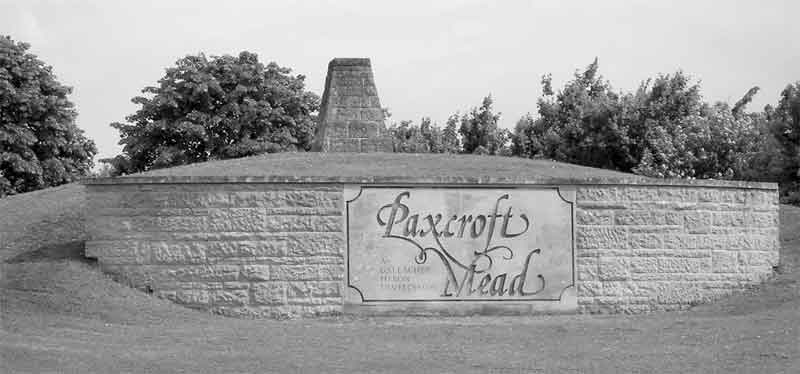 district centre at Hackett Place recently came to a head, when a Planning Inquiry was held to decide whether the legal agreement reserving it for a medical centre should be lifted, allowing the developer to build a pub. The forum held an online poll to gauge residents' views, which was advertised in local shops and in a story in the Wilshire Times. There were 118 votes cast, with just under 70% voting for the legal agreement for a medical centre to be upheld, and on this basis the Forum committee decided to make a representation at the Inquiry. With the council not contesting the appeal, it seemed likely that the developer would win the day and this was recently confirmed, when the result of the Inquiry was published. Nevertheless, it was a very useful exercise, giving
valuable experience of planning inquiry procedure as well as gathering 20 new members, since we made it a condition of voting to join the forum.
district centre at Hackett Place recently came to a head, when a Planning Inquiry was held to decide whether the legal agreement reserving it for a medical centre should be lifted, allowing the developer to build a pub. The forum held an online poll to gauge residents' views, which was advertised in local shops and in a story in the Wilshire Times. There were 118 votes cast, with just under 70% voting for the legal agreement for a medical centre to be upheld, and on this basis the Forum committee decided to make a representation at the Inquiry. With the council not contesting the appeal, it seemed likely that the developer would win the day and this was recently confirmed, when the result of the Inquiry was published. Nevertheless, it was a very useful exercise, giving
valuable experience of planning inquiry procedure as well as gathering 20 new members, since we made it a condition of voting to join the forum.
The forum also initiates its own projects, aiming to improve the quality of life on Paxcroft Mead for all its residents. Boredom and lack of focus among young people is just as much a problem on Paxcroft Mead as it is anywhere, and we have identified this as our first major challenge.
We are in the early stages of planning for a BMX track near the district centre, which will not only provide an enjoyable activity for young people of all ages, but - just as important - a social area which is demonstrably their own. There is a long way to go in securing the agreement of all interested parties and identifying funding, but we are quietly confident of success, as one of our number has already been instrumental in developing a similar facility at Studley Green.
The season of AGMs is now upon us, highlighting the challenge of sustaining momentum into the future. Like every other voluntary organisation, we could always do with new committee members; lives change and people move away - even from an estate as pleasant as Paxcroft Mead.
There is also the vexed question of funding: the initial costs involved in establishing the forum were largely covered by matched funding from Hilperton Parish and Trowbridge Town Councils, but there is no on-going funding available, so the spectre of fundraising looms. There is much to do; we sometimes wonder why we got involved at all, but it only takes one message of support, one positive meeting, to start the positive vibes running again.
Heritage Open Days 2010 Thursday 9th - Sunday 12th September 2010
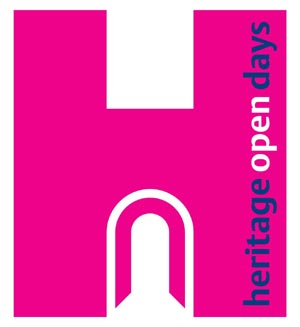 This year there will be 10 openings/events.
This year there will be 10 openings/events.
Holy Trinity and St Thomas's Churches are opening on Saturday from 10am to 4 pm as they are also taking part in “Stride and Ride”, the Wiltshire Historic
Churches sponsored walk or cycle to as many churches as possible. St James's Church cannot open because of a wedding, but the bell tower will be open on Sunday from 2pm - 4pm. Why not come and see the lovely view of the town centre and find the link with Ushers and the Salvation Army before you feel too old to climb the spiral stone staircase?
The Blind House will also be open from 10am - 4pm and I am looking for volunteers to spend an hour (or more!) on our stall. Also open on Saturday from 11am - 1pm is the Masonic Hall. Why was it built? How much did the Freemasons pay for it in 1904? Have you seen the Tudor features in Directors House in Fore Street? This could be your last opportunity as it will become a temporary home for vulnerable teenagers soon after that day. How many 20th century roads are so named because of an Elizabethan girl called Mary? Have you seen our stylish County Cricket Ground pavilion? Do you know which early and more recent nationally famous cricketing heroes played there? Find out on the Saturday between 2pm-4pm and enjoy a slice of cake as well!
On Thursday 9th our chairman Glyn Bridges will lead a walk around Pevsner's palaces starting at Duke Street car park at 2pm. There are also two talks in the Museum. These must both be booked in advance (01225 751339). Ken Rogers on ‘Pubs in Trowbridge’ on Friday at 11am and Pat Whitehead on ‘Fashion Through the Ages’ on Saturday at 11am.
Do tell your friends and neighbours about these events and get them to come as well.
| Coleman's Family Dental Practice, Timbrell Street |
| The Trowbridge Museum |
Notable Trowbridgians Samuel Brewer - botanist
Samuel Brewer (1669 - 1743) was the fifth son of William Brewer (1625 - 1707) who was a prosperous Trowbridge clothier and a Justice of the Peace. William, a royalist supporter, had originally come to the town with his clothier father, also named William, from Lullington. Samuel's mother Abigail n&eacut;e Strode was the daughter of Thomas Strode of Shepton Mallet. William married well as the Strodes
were a prominent Somerset family with connections to the legal and scientific worlds as well as royal administration. Some readers may have visited the Strode Arms at Cranmore named after this family. In Trowbridge, the Brewers owned Hall's Place, a house on the site of the present Town Hall and also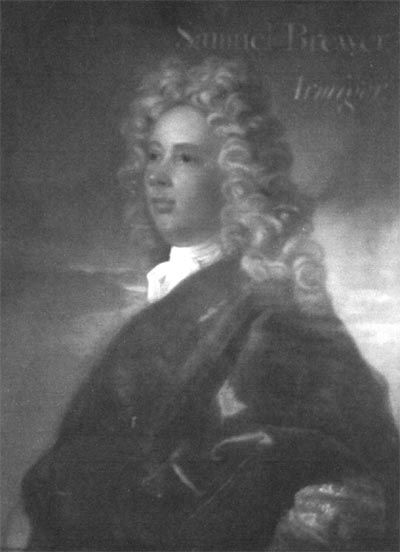 another residence where Rosefield House now stands in Polebarn Road. Interestingly, in 1673, the family, producers of medley cloth, were employing a number of skilled immigrant Dutch workers. William became a successful tradesman and his business extended to London from where
he and his sons traded overseas, as far as China. Three of William’s sons, including Samuel, appear to have involved themselves in the family firm and its estates in both Somerset and Wiltshire; two other sons became university graduates, one studied law and the other, Nathaniel, became a clergyman. The latter was vicar of Keevil (1702-1735) and North Bradley (1720-1727). Samuel did
not go to university, but appears to have been well educated in the numerical and literary skills needed to promote the family's business. There is a record of him managing trading connections in the north of England. Additionally, he developed an interest in natural history. In pursuit of this pastime, he met a number of important naturalists including the keeper of the Ashmolean Museum
at Oxford. Could the visit have been connected to the fact that his brother was studying at the university? Samuel was not unique in his hobby, as historically, a large number of wealthy people within the textile trade developed strong interests in natural history, especially field botany. Samuel Brewer married Elizabeth Bennett of Seend in 1699. His bride was the daughter of a prominent merchant from Salisbury, James Bennett. They had a son and daughter.
another residence where Rosefield House now stands in Polebarn Road. Interestingly, in 1673, the family, producers of medley cloth, were employing a number of skilled immigrant Dutch workers. William became a successful tradesman and his business extended to London from where
he and his sons traded overseas, as far as China. Three of William’s sons, including Samuel, appear to have involved themselves in the family firm and its estates in both Somerset and Wiltshire; two other sons became university graduates, one studied law and the other, Nathaniel, became a clergyman. The latter was vicar of Keevil (1702-1735) and North Bradley (1720-1727). Samuel did
not go to university, but appears to have been well educated in the numerical and literary skills needed to promote the family's business. There is a record of him managing trading connections in the north of England. Additionally, he developed an interest in natural history. In pursuit of this pastime, he met a number of important naturalists including the keeper of the Ashmolean Museum
at Oxford. Could the visit have been connected to the fact that his brother was studying at the university? Samuel was not unique in his hobby, as historically, a large number of wealthy people within the textile trade developed strong interests in natural history, especially field botany. Samuel Brewer married Elizabeth Bennett of Seend in 1699. His bride was the daughter of a prominent merchant from Salisbury, James Bennett. They had a son and daughter.
On the death of his father Samuel inherited part of the family business and in 1714 he represented the local industry in a petition to Parliament against a bill regarding broadcloth production. In 1723, he offered his house for sale and devoted himself to his pastime. Three years later, he went on a protracted botanical tour of the Welsh Marches and then North Wales with Johann Dillenius, the Professor of Botany at Oxford. After Dillenius returned from the tour, Samuel continued to stay in Wales and send plants back to him at Oxford. These specimens can be found in the Dillenian Herbarium (a collection of dried pressed plants) at Oxford and in the Natural History Museum in London. In addition, he sent material to Sir Hans Sloane, who is famous for his involvement in the Chelsea Physic Garden. Samuel is noted particularly for his collecting of mosses and liverworts. In fact, such was his renown for the subject that Dillenius mentioned his skill to the famous biologist and classifier Carl Linnaeus.
In his later years, Samuel lived in Yorkshire. He failed to complete ‘The Botanical Guide’, his finances fell on hard times and his children were a trial to him. There is a genus of plants named Breweria native of North America, however these are probably named after a nineteenth century American botanist William Brewer.
References: Mark Lawley http://britishbryologicalsociety.org.uk and Kenneth Rogers (1984) The Book of Trowbridge.
Life in Ashton Street
Having read Wende Maunder's interesting article in the last newsletter, I thought I would add a few more of my memories of that area. I lived at 23 Ashton Street, about half way down, now renumbered 46, with my parents and older sister. I was born in 1936 so lived there throughout the war years and into the 1960s. The house was a typical Victorian terraced house, two rooms downstairs and two bedrooms upstairs and a single storey scullery on the back. Outside, tacked on to the scullery, was a toilet and coal house. In the scullery was a built-in ‘copper’ boiler with a fire underneath where Mum used to do the weekly wash, we used it to heat the water for bath night, using a tin bath, which was kept outside when not in use. There was also a gas cooker, a Belfast sink, a heavy cast-iron mangle and a larder. There was no central heating, but in the living room was a large black Victorian fireplace with a hob for a kettle. There were also fireplaces in the front bedroom and the front room downstairs. We had a long back garden which ran down to Alma Street. Ashton Street was a good place to live in those days with nice people and plenty going on. Wende Maunder mentions the Girls' Home in Fern Cottage and the allotments. I remember Wende and her mother. We used to play in the fields next to Fern Cottage and I too remember the wonderful ill-gotten gains from the allotments.
Near the top of the street almost opposite Fern Cottage lived Mr Culverhouse a chimney sweep and
jobbing builder who swept our chimney once a year. Courtier's shop and workshop was on the corner
with Harford Street. They were painters and decorators, undertakers and general wood workers.
Opposite lived Mrs Marsden, Roger and Kay. Just down from them was Clarence Rolf, who had a small
upholstery business and worked in a large shed in his garden. Nearly opposite us was Clarks Place where
Miss Minty had a small private school. In number 2 lived the Evans family. Mr Evans was a clock and
watch repairer and did all the local repairs. Williams sweet shop was next and all the children used to
go there to get their sweets and later ice creams. Mr and Mrs Williams were a lovely old-fashioned
couple and everyone liked them. Further down lived Farmer Whatley who seemed very old to us
youngsters. He always wore a brown warehouse coat, gaiters and a trilby hat. He knew everything
about animals and people went to him for information, medicines etc. In Lower Alma Street lived a
well-known local photographer Mr Linzey. He was a very smart gentleman and I remember him in a
blazer, flannel trousers and a panama hat. At the very end of Lower Alma Street was a terrace of small
houses, in the last house lived a strange recluse called Jack Heard. We used to creep down there and
look in his windows. He had piles of newspapers in his front room and an old motorcycle covered in
dust. He often chased us!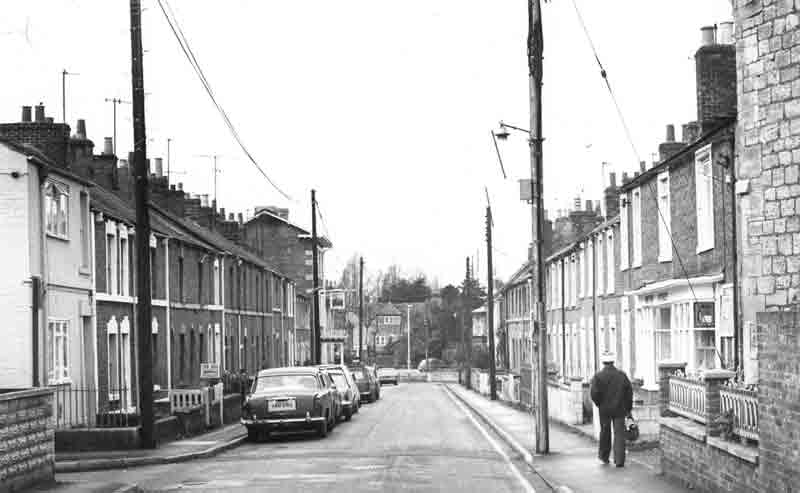
Near the town end of Ashton Street was the Castle Inn, an Ushers pub, run by Mr and Mrs Lawes and later by Jim and Joyce Ithell. At the side of the pub was Castle Yard a little square with very small old cottages. The Fido family lived here and I think a coal delivery man. Mr Fido had a special bicycle with knife grinding and scissor sharpening attachments and went round the town getting trade. I remember seeing him working in Ashton Street. His son, Nobby Fido, worked in McKays factory and later for the Council and was well known in the town as a road sweeper. On the corner of Ashton Street and Polebarn Road was Mr and Mrs Green's sweetshop, not so popular as the Williams, they always seemed so dull. My own father ran a fish delivery round in the late 1940s, the fish was sent by train from Grimsby, sorted in the garage and taken out by van to the town and surrounding villages. I can just remember Mum having milk delivered by horse and two-wheeled cart, ladled out of large milk churns. We had fruit and vegetables delivered by Mr Billett with his horse and four-wheeled cart. Billett's shop was on Hilperton Road, opposite the entrance to the Furlong. Behind their shop was their market garden, which is now Duke Street Car Park. So you see in Ashton Street and Alma Street we had most things we needed without going too far and our fair share of characters.
45/46 Fore Street Roger NewmanAt the New Year Social Steve Lovering put on display a selection of gramophone sleeves, mainly from W H Benjamin of the Trowbridge Music Salon in Silver Street, but one was from Arthur Spencer & Co of 45 Fore Street. The name did not ring a bell with Ken Rogers and I was only vaguely aware of such a business at that address. Having now searched my records I offer the following: The building now grade 1 listed and occupied by HSBC, was built in 1730, probably for John Watts, a merchant who made his money in Portugal. He died in 1741, is buried in St James's and his wife remained in residence to be followed by his nephew until 1779. William Palmer, a surgeon is recorded as living there between 1781 and 1785. The protruding window of Boots the Chemists, and chemists before them, was removed and on 16th November 1926 Arthur Samuel Spencer and partner John Leslie George opened Arthur Spencer & Co as a music warehouse and seller of gramophone records and radios. Their facia name of ‘ARTHUR SPENCER & CO’ appears to have been displayed as individual letters affixed to the Bath stone wall above the windows. (At the meeting my memory incorrectly thought that the business was on the first floor whereas it was at pavement level). They were there until late 1934 after which, on about 4th January 1935 the Sun Insurance Office Ltd opened. |
The Sensory Garden
After a very colourful display of spring flowers (our first snowdrops came into flower in December) we come to a very green and shady time of year in the Garden. The Tulip Tree flowers June to August with large orange and green flowers; we are still waiting to see if the Davidia (Handkerchief Tree) shows its white bracts this year. The Pergola has Honeysuckle ‘Graham Thomas&rsquo with Rose ‘Compassion and Dizzy Heights’ climbing over it with the ground cover Roses “Yorkshire” by the pond.
Elsewhere there is Rose ‘First Western’ by the TA Plaque and a good show of colour and fragrance from Rose ‘Lions International’ next to the woodcarving. One plant that attracts the most interest is the Dierama pulcherrimum (Angels Fishing Rods) with its long graceful stems of pink flowers in midsummer. The Garden has a good selection of fragrant plants and shrubs, some with unusual leaf textures, the velvet to the touch of scented geraniums, and the Gunnera, with its prickly stems and sandpaper-like feel of its giant leaves, is a particular favourite with children. Along the rill and pondside the reeds, hostas, alliums and water lilies attract dragonflies, butterflies and many other insects as does the log pile and long grasses of the Wild Area, while the birds with their young take little notice of the many people who like to sit in this tranquil garden.
Holy Trinity Church
 Holy Trinity Church, now known as ‘The Church on the Roundabout’ stands at the junction of Bradford Road, Wingfield Road, Newtown and Stallard Street. It is listed as a GRADE II* building of architectural and historical significance. In 1835 the Reverend Francis Fulford, Rector of Trowbridge (St James's being the only Anglican church in the town then) said ‘from the moment I first became connected with this place as a minister of Christ, and was made acquainted with the fact that for a population of at least 12,000 souls, there was scarcely accommodation provided in the church for 1000, it has been an object that I have much at heart, to procure the erection of another sacred edifice in order to meet the urgent and growing wants of the inhabitants.’ So having perceived the need for another Anglican Church, The Revd Fulford launched his appeal. He estimated the costs to be ‘rather more than £4000’. Contributions to the appeal were received from many including the Bishop of Salisbury, the Duke of Rutland, Lady Drummond, (his daughter), Lord Arden, the Clark family of Trowbridge, Samuel Bythesea and Fulford himself. It was to be built in the Newtown area where much new development was taking place. The final cost was £6,415.12s, with all expenses paid. Lady Drummond laid the foundation stone on April 8th 1837, and Holy Trinity was consecrated on All Saints Day, November 1st 1838. It remained a parish church until Easter Day, April 4th 2010. From early on until after WW2, Holy Trinity was the unofficial garrison church of the Royal Artillery Regiment which was stationed in Trowbridge.
Holy Trinity Church, now known as ‘The Church on the Roundabout’ stands at the junction of Bradford Road, Wingfield Road, Newtown and Stallard Street. It is listed as a GRADE II* building of architectural and historical significance. In 1835 the Reverend Francis Fulford, Rector of Trowbridge (St James's being the only Anglican church in the town then) said ‘from the moment I first became connected with this place as a minister of Christ, and was made acquainted with the fact that for a population of at least 12,000 souls, there was scarcely accommodation provided in the church for 1000, it has been an object that I have much at heart, to procure the erection of another sacred edifice in order to meet the urgent and growing wants of the inhabitants.’ So having perceived the need for another Anglican Church, The Revd Fulford launched his appeal. He estimated the costs to be ‘rather more than £4000’. Contributions to the appeal were received from many including the Bishop of Salisbury, the Duke of Rutland, Lady Drummond, (his daughter), Lord Arden, the Clark family of Trowbridge, Samuel Bythesea and Fulford himself. It was to be built in the Newtown area where much new development was taking place. The final cost was £6,415.12s, with all expenses paid. Lady Drummond laid the foundation stone on April 8th 1837, and Holy Trinity was consecrated on All Saints Day, November 1st 1838. It remained a parish church until Easter Day, April 4th 2010. From early on until after WW2, Holy Trinity was the unofficial garrison church of the Royal Artillery Regiment which was stationed in Trowbridge.
The architect A F Livesay from Portsmouth was appointed to design the building. Little is known about him, but it is known that after Holy Trinity, he designed three more churches, in Andover, in Newtown on the Isle of Wight, both of which have similarities with Holy Trinity, and one in Portsmouth which has been demolished. The builders were Richard and Charles Gane. Built in the Early English style, Livesay drew his inspiration for Holy Trinity from the Lady Chapel of Salisbury Cathedral. The external walls are built of local (probably Westwood) limestone. A feature of the external walls was the number of intricately carved details to pinnacles and label stops, but due to erosion most of these have long since disappeared. The roof is of Welsh slate. Internally the structure is based upon slim cast iron columns and a timber-framed, plastered ribbed vaulting of a relatively simple pattern. It is symmetrical and cruciform with a chancel and chancel aisles, north and south transepts, and until early in 2000 it had an aisled nave. The areas of each internal corner of the cross were originally porches.
The entrance porch in the southwest has been retained, but the others have been utilised for different needs. The tower is in the south transept. Originally it had a west gallery where in 1852 a pipe organ was installed. Prior to that a Seraphine - a forerunner of the Harmonium was used. The west gallery was removed in 1888, and the present organ was installed in the chancel.
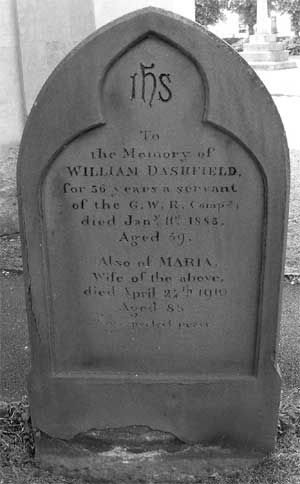 There are several features of architectural interest:
There are several features of architectural interest:
Altars: The High Altar is presumably the original of 1838. That in the All Saints Chapel was made in 1953 to commemorate the Queen's coronation. The movable Nave Altar, given in 1982, was made by Trowbridge College students.
Reredoses: The High Altar reredos was added in 1914, and is of carved oak with inserts of opus sextile as is the one added in 1927 in the All Saints Chapel. Both were made by A L and C E Moore, of London.
Pulpit: The original was a desk hole in the SE wall, in the corner of the “crossing”, and was approached by a stair from the priests' vestry (now the disabled toilet). It was transferred to the north side in 1904.
Font: The original, said to be unattractive, ended up as a garden ornament! The present font was a gift from the Revd Carr Glyn Acworth, Vicar in 1874.
Stained Glass: Installed in 1909, the east window featuring the Crucifixion and the Ascension is by A. L. Moore of London. The windows in the northeast & southeast chancel, circa 1866, the window in the north chancel of 1906 featuring Mary and Martha with Jesus, that in the NW chancel of 1912 featuring St Gregory and the south chancel window of 1869 featuring The Last Supper are also thought to be the work of Moore. The south transept windows of 1937 featuring Dorcas, St Martin and Christ Healing and those in the
N transept (All Saints Chapel) of 1945 featuring Christ as the Good Shepherd (east panel) and St Francis
and St Christopher (west panel) are all by William Morris & Co.
Memorials: Inscriptions below the NE and SE chancel windows remember the builders Charles Gane (died 1866), and Richard Gane (died 1879). Another window commemorates the Revd Digby Walsh who died suddenly in 1869 aged 39. He had been the vicar for eleven years. A memorial erected in the late 1870's commemorates the soldiers who died whilst garrisoned at Trowbridge. The east window was dedicated in 1908 to the Revd Robert Ewing, vicar for 15 years. Other inscriptions include members of the Stancomb family, the Norris family, Harry Moore, organist (died 1912) and Alice Ewing, wife of Robert Ewing. Externally the grave of William Dashfield (see photograph above) who died 1883 is interesting. Having worked for the GWR for 36 years he was buried facing towards the station in a west-east direction rather than the traditional east-west one. The Portland stone cross war memorial in the churchyard was erected following World War One.
Two special services took place over Easter 2010 to commemorate the closure of Holy Trinity as a parish church. Both were well attended and occasions of thanksgiving for its life and Christian ministry over 172 years.
RECENT MEETINGS |
Annual General Meeting Celia Russell - March 16th 2010
In the absence of the Chairman, Glyn Bridges who was attending a Town Council Meeting to present a copy of the Town Charter, the Annual General Meeting held on 16th March was chaired by Margaret Howard, Vice Chairman. Over fifty members were in attendance with apologies from five members.
During the brief business meeting Glyn Bridges was re-elected as Chairman, with Kay Austin as Treasurer
and Celia Russell as Secretary. The Executive Committee consisting of Peter Bull, Kevin Hartley,
Jonathan Hawkes, Margaret Howard, Diana Ingram and Diana King were all re-elected.
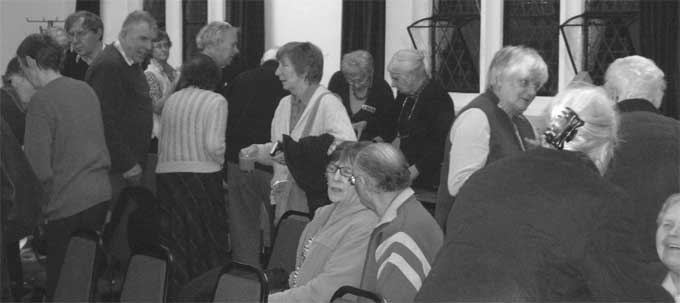 Mr Patrick Andrews kindly agreed to act again as auditor. The reports and accounts were presented to the meeting and there were no matters arising. A formal vote of thanks was given to Kay and John Austin, Glyn Bridges and Paul Lamb for all their work on making the Newsletter such a success. Margaret Howard pointed out that the ASHTAV (Association of Small Historic Towns and Villages) publication often quotes large extracts from our Newsletters. Members were also canvassed on their willingness to be contacted by e-mail. This would only be for reminders etc, the Newsletter would continue to be delivered. If members give their e-mail address to Diana Ingram, the Membership Secretary, then this would be taken as permission to contact that member by e-mail. We would, of course, abide by the requirements of the Data Protection Act.
Mr Patrick Andrews kindly agreed to act again as auditor. The reports and accounts were presented to the meeting and there were no matters arising. A formal vote of thanks was given to Kay and John Austin, Glyn Bridges and Paul Lamb for all their work on making the Newsletter such a success. Margaret Howard pointed out that the ASHTAV (Association of Small Historic Towns and Villages) publication often quotes large extracts from our Newsletters. Members were also canvassed on their willingness to be contacted by e-mail. This would only be for reminders etc, the Newsletter would continue to be delivered. If members give their e-mail address to Diana Ingram, the Membership Secretary, then this would be taken as permission to contact that member by e-mail. We would, of course, abide by the requirements of the Data Protection Act.
The business meeting concluded, Ken Rogers spoke to the Society together with Museum Friends on ‘The Manorial Lords of Trowbridge’.
The Manorial Lords of Trowbridge by Ken Rogers - March 16th 2010
Once again we were amazed at Ken's encyclopaedic knowledge and entertained by his dry wit. The Manor of Trowbridge was one of very few to remain in Saxon hands after the conquest but later passed through many families including important political figures of state; some of them met their end on the battle field, on the scaffold and at the tourney. The most famous include members of families like the de Bohuns, Seymours, and Percys and many of the major noble houses including Salisbury, Somerset, Surrey, Hertford, Hereford, Rutland (Rutland Crescent), Northumberland, the House of Lancaster and for many years the Crown. We learned of treason, turncoats, double widows of 15 years of age, the reviled John of Gaunt and King John’s two visits to the town. Very significant
was the building of the castle in the early 12th century, so stout a structure that it withstood Stephen's siege of 1139. By the 19th century all the land had been sold and only the title remained, bought in 1801 by one of the great Trowbridge families, Timbrell (Timbrell Street). In 1851 the title was acquired by the Stancombs, who hold it to this day.
Refreshments were provided by Ruth Bridges and as usual Peter Bull ran the raffle.
Frome Walk with Alistair McLeay - 27th April 2010
This midweek afternoon outing was a great success and 22 attended. Many of us found Frome by far the most fascinating of our neighbouring towns – indeed at one time it was bigger and more important than the Roman City – which it tried to emulate in 1814 with the opening of Bath Street. Our route took us to Willow Vale (tastefully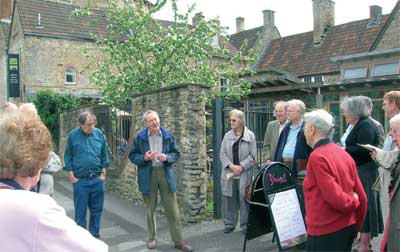 restored/converted derelict warehouse), The Bridge (cf Pulteney Bridge, A Venetian palace, now the museum and The Blue House), Apple Alley (medieval, restored), Cheap Street (constant flow leat, Cockey gas bracket, Tudor rose carvings on semi-hidden jetty), St John’s Church (Graves of Bishop Ken and the Trowbridge Tuckers – see Newsletter autumn 2009) and Church Street (a vulnerable Fire insurance mark and the ex Waggon and Horses terminal for the original Frome Flyer). We then crossed Bath Street (Rook Lane Chapel Arts Centre) to Christchurch with its Victorian gothic architecture (Wesley Church complex and original Police Station) plus several other gems. Next the Sheppard's Barton area (Gardiner's shop front from our Fore Street re-erected at 21/22 Catherine Street) and then Trinity (Castle House - The Keep (? there never was a castle), the extravagant neo byzantine Butler and Tanner edifice and the ‘wrong way round church’).
Finally, and still in warm sunshine back via the delightful Whittox Lane district (Melrose House was Pevsner’s favourite in the town, the Sun Inn and many lovingly restored houses) we returned to our starting point.
restored/converted derelict warehouse), The Bridge (cf Pulteney Bridge, A Venetian palace, now the museum and The Blue House), Apple Alley (medieval, restored), Cheap Street (constant flow leat, Cockey gas bracket, Tudor rose carvings on semi-hidden jetty), St John’s Church (Graves of Bishop Ken and the Trowbridge Tuckers – see Newsletter autumn 2009) and Church Street (a vulnerable Fire insurance mark and the ex Waggon and Horses terminal for the original Frome Flyer). We then crossed Bath Street (Rook Lane Chapel Arts Centre) to Christchurch with its Victorian gothic architecture (Wesley Church complex and original Police Station) plus several other gems. Next the Sheppard's Barton area (Gardiner's shop front from our Fore Street re-erected at 21/22 Catherine Street) and then Trinity (Castle House - The Keep (? there never was a castle), the extravagant neo byzantine Butler and Tanner edifice and the ‘wrong way round church’).
Finally, and still in warm sunshine back via the delightful Whittox Lane district (Melrose House was Pevsner’s favourite in the town, the Sun Inn and many lovingly restored houses) we returned to our starting point.
Our new portable PA system came into its own at some of the noisier locations. We are much in Alistair's debt and his knowledge and enthusiasm were an inspiration - he has kindly offered a follow up. Those that missed this meeting could pick up a Leisure Guide leaflet from the TIC (in the restored kiln building) and have a go for themselves. Michael McGarvie's ‘The Book of Frome’ is also recommended.
©Trowbridge Civic Society 2010
